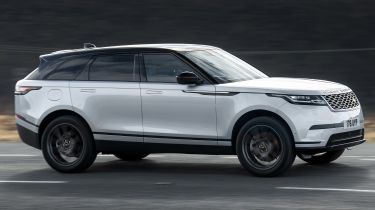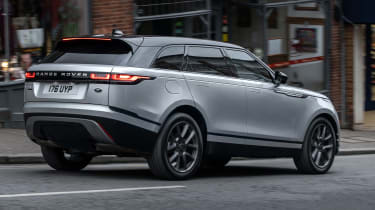Range Rover Velar PHEV review
It's not the last word in practicality, but in plug-in hybrid form, the luxurious and good-to-drive Range Rover Velar is appealingly affordable to run for such an upmarket car

Pros
- Great to drive
- Stunning looks
- Low running costs
Cons
- Pretty expensive
- Diesel still better for high mileage
- Not the most practical luxury SUV
| Car type | Electric range | Fuel economy | CO2 emissions |
|---|---|---|---|
| Plug-in hybrid | 29-33 miles | 113-128mpg | 50-56g/km |
Land Rover and sister brand Jaguar have been on a plug-in hybrid blitz of late, with petrol-electric versions of the Discovery Sport, Range Rover Evoque, E-Pace and F-Pace all joining the fray to do battle with established premium competition from Audi, BMW, Mercedes and Volvo.
The latest model to get the plug-in treatment is the Range Rover Velar, the sleeker version of the larger Range Rover and Range Rover Sport – both of which have offered plug-in power for several years now. The Velar was intended from the outset to be a desirable, head-turning car, so it's hoped this kerb appeal will make the Velar PHEV more than just another big petrol-electric SUV that exists solely to take advantage of favourable company-car tax rates.
It certainly helps that the Velar was a pretty strong proposition in the first place, with a nicely balanced chassis and a smooth ride. The P400e powertrain in this version certainly lets you exploit that fully: there's 399bhp and 640Nm of torque on offer when you put your foot down, which is enough for a 5.1-second 0-60mph time.
And when driving more sedately, the Velar offers serenely quiet progress – either because it's reverted to full electric mode, or because its clever noise-cancelling technology is suppressing any din from under the bonnet or outside.
Returning to matters financial, the Velar makes as compelling a case for company-car buyers as any plug-in. But you need to choose your spec carefully to get maximum benefit: only SE hits the magic 50g/km CO2 emissions mark that – together with the car's 33-mile electric range – ensures an 11% Benefit-in-Kind (BiK) tax rating during the 2021/22 financial year.
The other versions have CO2 numbers ranging from 51 to 56g/km and electric ranges from 29 to 32 miles, so fall into either the 14% and 15% band. But that's still significantly less than the 36% and 37% figures that apply to the purely petrol and diesel-engined Velar models.
As for fuel bills, if you rarely exceed the car's 30-or-so-mile electric range and can charge its 17.1kWh battery up at either or both ends of your journeys, they'll barely exist – but if you do regular long-distance runs that see the battery become fully depleted and the petrol engine have to work on its own, the claimed circa-120mpg economy figure will become a distant mirage. This is where diesel can still end up making sense for high-mileage drivers.
While a lot of those points apply to the Velar's German rivals, there is one area where it comprehensively outdoes them: off-road ability. Land Rover never cuts corners in this respect and the Velar is no exception.
It can also hold its head pretty high when it comes to interior quality and on-board technology: the new Pivi and Pivi Pro systems found in all the latest Jaguar and Land Rover models are a quantum leap over the brands' clunky setups of old. That said, the Velar itself is already a little behind the curve in this area, missing out on the lovely 11.4-inch touchscreen you get in the latest Land Rover Discovery.

The Discovery is also a better choice if it's sheer practicality you're after: the Velar will seat five at most (although three in the rear is a bit of squeeze), while the plug-in version sees boot capacity with all seats in place drop from 748 to 625 litres.
Pricing may also give you pause for thought if you're buying privately: the cheapest Velar plug-in will set you back a whopping £10,000 more than the entry-level petrol model and you can spend over £70,000 if you're minded to go for the all-bells-and-whistles R-Dynamic HSE version. But for company-car buyers fortunate enough to choose cars in this class, a hybrid Velar in one of the mid-range trims will be hard to resist.





